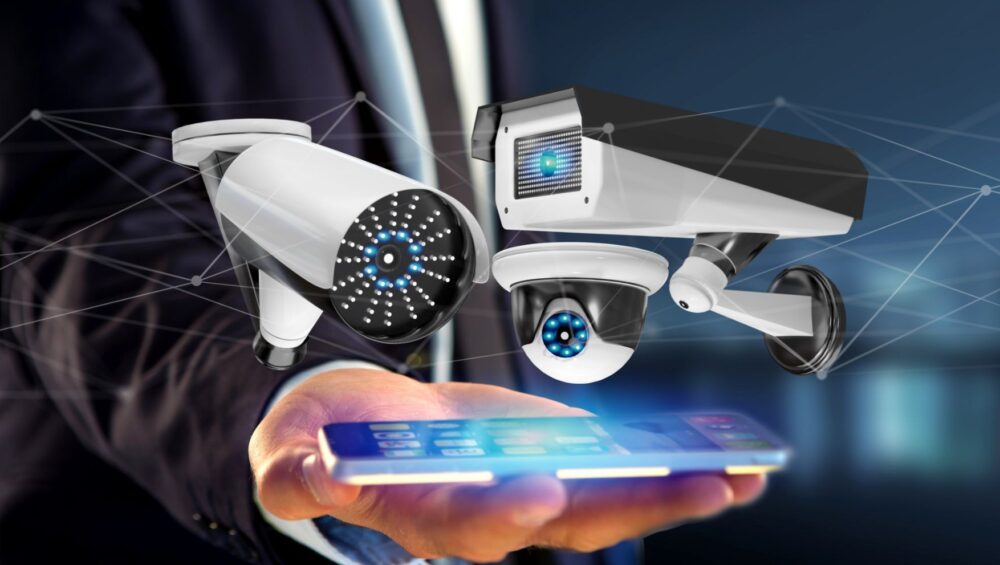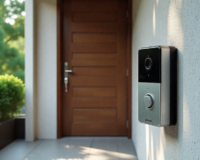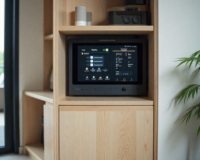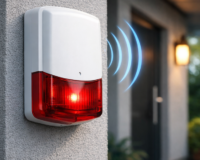As we examine CCTV trends for 2024, it is evident that more organizations will adopt remote-first, scalable solutions. Key video security trends include the adoption of cloud-native solutions, AI-powered video analytics, and a shift from analog to fully digital video systems.
In terms of business security, camera trends are focusing on transforming footage into valuable data through AI and investing in “As a Service” (AaS) solutions for scalable integration of new technologies into existing operations and standards, ranging from on-premise security systems to ONVIF camera compliance.
The integration of various hardware and software to create comprehensive security solutions and simplify management is paramount. Trends in video surveillance technology for 2024 emphasize the importance of cloud-connected cameras compatible with existing systems and open platforms. Additionally, compliance with the National Defense Authorization Act (NDAA) is crucial, necessitating the use of NDAA-compliant security cameras, which include a range of devices from weather-proof cameras to thermal imaging cameras.
Below, we discuss the latest CCTV camera technology trends and explain how to best integrate these trends into your security system.
Read more: Surveillance Camera Solutions for Construction Sites in Melbourne
An Overview of the Latest Trends in Commercial CCTV Camera Technology
In the rapidly evolving field of security technology, Closed-Circuit Television (CCTV) systems remain at the forefront, continually advancing to meet the growing demands of both private and public security. As we move into 2024, several trends are shaping the future of CCTV technology, driven by advancements in artificial intelligence (AI), the Internet of Things (IoT), and overall improvements in camera hardware.
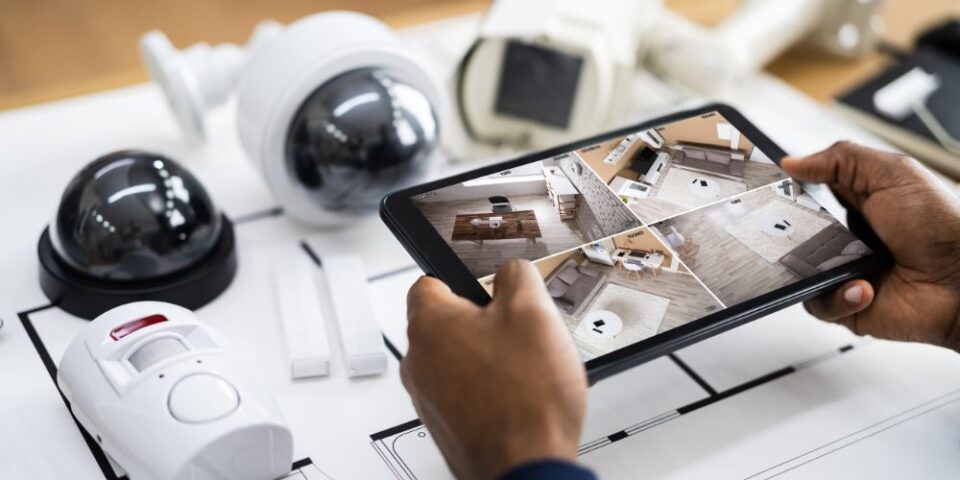
1. Artificial Intelligence and Machine Learning Integration
Artificial Intelligence (AI) and Machine Learning (ML) have been significant drivers of change in many technology sectors, and CCTV systems are no exception. The integration of AI and ML into CCTV cameras is enhancing their capability to not just record footage but to analyze it in real-time.
- Smart Video Analytics: AI-powered video analytics can now identify and categorize objects, recognize faces, and detect unusual behavior patterns. This capability enables more proactive security measures, as systems can alert operators to potential threats before they escalate.
- Reduced False Alarms: By learning from the environment, AI-enabled CCTV systems can reduce the number of false alarms triggered by non-threatening movements, such as animals or weather-related incidents. This refinement ensures that security personnel can focus on genuine threats, improving overall efficiency.
2. Enhanced Resolution and Image Quality
The demand for higher resolution and better image quality in CCTV footage continues to grow. In 2024, we expect to see significant improvements in this area, driven by advancements in camera sensors and processing technologies.
- 4K and Beyond: While 4K resolution has become more common, the industry is now moving towards even higher resolutions, such as 8K. These advancements provide clearer, more detailed images, crucial for identifying individuals and objects at a distance.
- Low-Light and Infrared Performance: Enhanced low-light capabilities and infrared (IR) imaging are becoming standard. Innovations in sensor technology allow cameras to capture clear images in low-light conditions and complete darkness, improving security during nighttime hours.
3. Edge Computing
Edge computing, which involves processing data closer to the source rather than relying on a centralized data center, is becoming increasingly prevalent in CCTV systems.
- Faster Data Processing: With edge computing, CCTV cameras can process data locally, resulting in faster response times. This immediacy is critical for real-time video analytics and threat detection, ensuring quicker interventions when necessary.
- Bandwidth Efficiency: By processing data at the edge, these systems reduce the amount of data that needs to be transmitted to central servers, conserving bandwidth and lowering costs. This is particularly beneficial for large-scale CCTV deployments in smart cities and enterprises.
4. Cloud Integration and IoT
The convergence of CCTV technology with the Internet of Things (IoT) and cloud computing is transforming the way surveillance systems are managed and operated.
- Scalable Storage Solutions: Cloud integration offers scalable storage solutions, allowing organizations to store vast amounts of footage without the need for extensive on-premises hardware. This flexibility is particularly advantageous for businesses with fluctuating storage needs.
- Remote Access and Management: IoT-enabled CCTV systems can be accessed and managed remotely, providing real-time monitoring and control from anywhere in the world. This capability is crucial for organizations with multiple locations or those that require continuous monitoring.
5. Advanced Cybersecurity Measures
As CCTV systems become more interconnected and reliant on network infrastructure, the importance of robust cybersecurity measures cannot be overstated.
- Encryption and Data Protection: To protect sensitive footage from unauthorized access and cyberattacks, advanced encryption methods are being implemented. End-to-end encryption ensures that data remains secure throughout its transmission and storage.
- AI-Driven Threat Detection: AI is also being used to enhance cybersecurity within CCTV systems. AI-driven threat detection can identify and respond to suspicious activities, such as unauthorized access attempts or unusual network traffic patterns, thereby bolstering overall system security.
6. Facial Recognition and Biometric Authentication
Facial recognition technology has made significant strides in recent years and is set to become even more sophisticated in 2024.
- Improved Accuracy: Advances in AI and ML are enhancing the accuracy of facial recognition systems, reducing false positives and negatives. These improvements are crucial for applications where precision is paramount, such as access control and identity verification.
- Privacy Concerns and Regulations: While facial recognition offers substantial benefits, it also raises privacy concerns. In response, regulatory frameworks are being developed to ensure that this technology is used responsibly and ethically, balancing security needs with individual privacy rights.
Demand is increasing for IP cameras over analog in the security camera industry
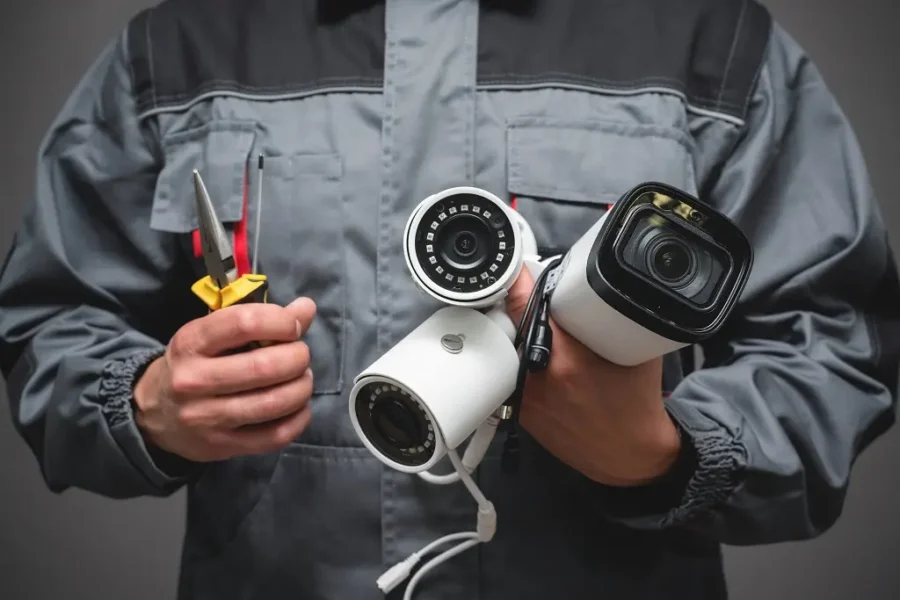
The security camera industry continues to see a strong preference for IP cameras over analog systems. As businesses in the security camera industry and CCTV technology migrate operations to the cloud and invest in new technologies like AI, they naturally gravitate towards devices that fit into this new ecosystem. Analog cameras, which transmit raw video signals over coaxial cables, do not integrate as seamlessly. Although it is possible to enhance legacy analog cameras with newer video analytics technology, many businesses are opting to upgrade to IP security cameras.
When comparing IP cameras to analog cameras, the advantages of IP are evident. For instance, video quality is significantly superior. The image resolution of an IP camera can be 6 to 20 times higher than that of an analog camera, allowing for wider viewing areas and much greater detail when zooming in.
IP cameras transmit video as a digital signal, which is generally of better quality. If the signal is transmitted over Wi-Fi rather than cables, the risk of degradation over long distances is also significantly reduced. The latest CCTV camera technology focuses on enhancing IP cameras, such as IP pan-tilt-zoom cameras, to make them even smarter in various ways.
The Rise of 5G in Video Surveillance Camera Technology
The development of 5G-enabled cameras is a major trend in the security camera industry. These CCTV cameras will transmit audio and video signals over 5th-generation wireless networks, which are gradually being rolled out in several countries. These cameras require a mobile service plan to function and offer faster speeds, greater capacity, higher-quality video, and a more reliable connection.
Currently, only a few of these cameras are available on the market. As they become more popular, consumers can expect broader integrations and applications. Whether using 5G or other security cameras, it is advisable to choose ONVIF-compliant cameras and an open-platform system to ensure seamless integration with other hardware, software, and VMS providers.
As the latest CCTV camera technology becomes easier to access on the go, it is likely that 5G cameras and mobile applications will become even more effective and intuitive to use.
Thermal Imaging Cameras: A Growing Trend in CCTV Technology
Thermal imaging cameras are gaining popularity in CCTV technology. As thermal security camera technology improves, security professionals are finding them to be a versatile piece of security equipment. Thermal cameras have been used to detect fire and are now a core part of video security systems that monitor sites in low lighting or night conditions. “Day-to-night” cameras are also sought after in the CCTV camera market, as they combine regular video and infrared technologies to monitor sites 24/7, eliminating the need for two separate sets of cameras.
Alongside regular CCTV bullet or dome cameras, thermal cameras can also be enhanced with the latest video analytics technology. Neural networks are being trained to analyze infrared images with similar levels of accuracy as full-color images.
NDAA-Compliant Security Cameras with Specialized Features
For security contractors and organizations in the video surveillance industry, emphasizing compliance with the National Defense Authorization Act (NDAA) is crucial. Non-compliance can lead to significant revenue losses and legal consequences. The NDAA bans the use of telecommunication equipment from certain China-based manufacturers, such as Huawei, ZTE, Hytera Communications Corporation, Hikvision, and Dahua, in government facilities. This means security organizations must avoid using devices, parts, components, subcomponents, and chipsets from these listed companies. One of the significant video security trends for 2024 will be the widespread removal and replacement of such equipment with NDAA-compliant security cameras.
As more organizations with unique security needs demand specific features in surveillance devices, security cameras with advanced video surveillance technology are becoming more widely available in 2024. Examples include rugged security cameras for extreme weather conditions, optical image stabilization for capturing clear images in challenging lighting, and smart analytics capable of identifying vehicles, objects, people, and events.
NDAA-compliant cameras with advanced features are not mutually exclusive. A wide variety of NDAA-compliant security cameras with specialized technologies are accessible to security contractors serving government agencies with distinct security needs.
Seamless Integration of Security Cameras with IT Infrastructure
Considering new surveillance technology and business security camera trends in 2024, the most popular features include rapid setup, flexibility, remote connectivity, and ease of integration. As companies move many operations online, often to the cloud, new devices, software, and systems like access control must integrate seamlessly with existing infrastructure. The security camera industry has responded with new hardware and software solutions to facilitate this.
Plug-and-play solutions are increasingly attractive to commercial security professionals who want to avoid prolonged testing and delays in operations. As companies experiment with different technologies, mixing and matching solutions to create tailored security systems, the ability to integrate everything easily is indispensable.
Integration with Smart Home and Building Automation
The integration of CCTV systems with smart home and building automation platforms is creating more cohesive and efficient security solutions.
- Unified Control Systems: By linking CCTV cameras with other smart devices, such as door locks, alarms, and lighting systems, users can create unified control systems that enhance security and convenience. For example, a security breach detected by a camera can trigger an automatic lockdown or notify the authorities.
- Energy Efficiency: Smart integration also contributes to energy efficiency. Cameras can be programmed to adjust their operation based on occupancy or time of day, reducing energy consumption without compromising security.

